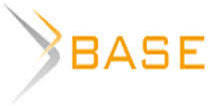The General Spirit and Characteristics of the Images of the Mythical Heroes Yi and Hercules
Myth carries the earliest cultural memory of human beings. It is a way of thinking and a spiritual form for human beings to grasp the external world. As a type of myth, hero myth is a very important cultural phenomenon, and it is an integral part of the development of human spiritual form. The ideal sustenance has had a profound impact on the social and cultural life, religious morality, political history and other aspects of later generations. Yi and Hercules are famous heroes in ancient Chinese and ancient Greek mythology respectively. They are the embodiment of wisdom and strength. They have achieved extraordinary and similar performance. Although they have different personalities and different shapes, since they are all called heroes, it shows that they have a common characteristic, and this characteristic is personality, in other words heroic quality and heroic spirit. They have lofty ideals and personalities, and they have become the spiritual sustenance of the ancestors, the carriers of the national spirit and cultural symbols. By comparing the heroic images of Yi and Hercules, this article explores the common brilliance of different heroic images by using the method of literature research and comparative research, which is beneficial to inherit and carry forward the noble heroic spirit sung in myths and legends. Heroes are always representatives of society, and their beautiful qualities and characteristics that conform to or surpass the times are actually a model and social appeal of human beings. The study of heroic images will never lose its meaning. It is a special angle to study the essence of phenomena and a special cultural vision.

















While nobody left any comments to this publication.
You can be first.
Apollodorus (1921), “The Library”, Loeb Classical Library, with an English translation by Sir James George Frazer, Harvard University Press, Cambridge, Mass. USA.
Boardman, J. (2015), The Greeks in Asia, London: Thames and Hudson, U.K.
Campbell, J. (2004), TheHero with a Thousand Faces, Clarissa Pinkola Estes Ph. D, Published by Princeton University Press, USA.
Chen Jing (2016), “Research on the motif of heroic exorcism in ancient Greek mythology”, Journal of Kaifeng Institute of Education, 36 (5), China (in Chinese)
Coldstream, J. N. (1976) “Hero Cults in the Age of Homer”,The Journal of Hellenic Studies, 96, 8-17.
Cook, E. (2019). “A companion to early German romantic philosophy”, The philosophy of mythology, in E. Milán & J. Norman (eds.), Koninklijke Brill NV, Leiden, The Netherlands, 113-142.
Engels, F. (1972), “Ludwig Feuerbach and the End of Classical German Philosophy”, Selected Works of Marx and Engels, Volume Four, The Central Committee of the Communist Party of China, Marx, Engels, Lenin and Stalin’s Works Compilation and Compilation Bureau, People’s Publishing House, Beijing, (in Chinese).
Graf, F. (1993), Greek Mythology: An Introduction. Baltimore and London: Johns Hopkins University Press.
Guo Ling (2019), “Moral education that highlights the value of life – Based on the analysis of the heroic virtues of ancient Greek mythology”, Contemporary educational science, issue 5, China (in Chinese).
Harrison, J. E. (1963), Mythology, New York and Birmingham: Harcourt, Brace&World Inc.
Hesiod (1997), Work and Time, translated by Zhang Zhuming and Jiang Ping, Commercial Press, Beijing, China (in Chinese).
Li Xueqin (1999), The Analects of Confucius notes, published by Peking University Press, Beijing, China (in Chinese).
Lin Jiali (2010), Translation notes‘Chu Ci’, published by Zhonghua Book Company, Beijing, China (in Chinese).
Liu An (2014), Huai nanzi’ Ben Jingxun, translated by Chen Guangzhong, Zhonghua Book Company, Beijing, China (in Chinese).
Liu An and his followers (2014), Huainanzi Xiuwuxun, translated by Chen Liu Cheng (2018), “The Study of Heracles Workship”, Journal of Inner Mongolia University(Philosophy and Social Sciences), 50 (2), China (in Chinese).
Liu Xin (2010), The Classic of mountains and Seas, translated into Modern Chinese by Chen Cheng, translated into English by Wang Hong & Zhao Zheng, Hunan People’s Publishing House, Volume Eighteen the Classic of Areas Within the Seas, China.
Morgan, L. H. (1944), Ancient Society or Researches in the Lines of Human Progress from Savagery through Barbarism to Civilization, re-produced from the First Indian Edition, published by Bharti Library, Booksellers and Publishers, Calcutta.
Myth Theory and Criticism (from John Hopkins Guide to Literary Theory and Criticism). Accessed 30.10.2022. URL: https://www.ndsu.edu/pubweb/~cinichol/271/Myth%20Theory%20and%20Criticism.htm
Rose, H. J. (1930), Modern Methods in Classical Mythology, St. Andrew: W.C. Henderson&Son, Ltd, University Press.
Segal, R. A (2004), Myth, translated by Liu Xiangyu (2008), Published by Foreign language teaching and research press, Beijing, China (in English).
Strenski, I. (1987), Four Theories of Myth in Twentieth-Century History, University of Iowa Press, Iowa City.
Tylor, E. B. (2005), Primitive Culture: Researches into the Development of Mythology, Philosophy, Religion, Language, Art, and Custom, translated by Lian Shusheng, Guangxi Normal University Press, Guilin, China (in Chinese).
Wang Yuliang (1989), Value Philosophy, Published by Shaanxi People’s Publishing House, Xi’an, China (in Chinese).
Yang Lihui (2009), Myth and Mythology, Beijing Normal University Press, Beijing, China (in Chinese).
Ye Shuxian (1991), The Hero and the Sun: Archetypal Reconstruction of Ancient Chinese Epics, Shanghai Academy of Social Sciences Press, China (in Chinese).
Zhang Chunyi (1988), Mozi’s Collected Solutions, Published by Chengdu Ancient Books Bookstore, Sichuan, China (in Chinese).
Zheng Chunmiao (1994), Comparative Study of Chinese and Western Cultures, Beijing Language Institute Press, Beijing, China (in Chinese).
Zuo Danhong, Wang Yaguang (2015), Hero Image and Cultural Spirit in Chinese and Western Myths and Legends, Journal of Shenyang University of Technology (Social Science Edition), 8 (4), China (in Chinese).